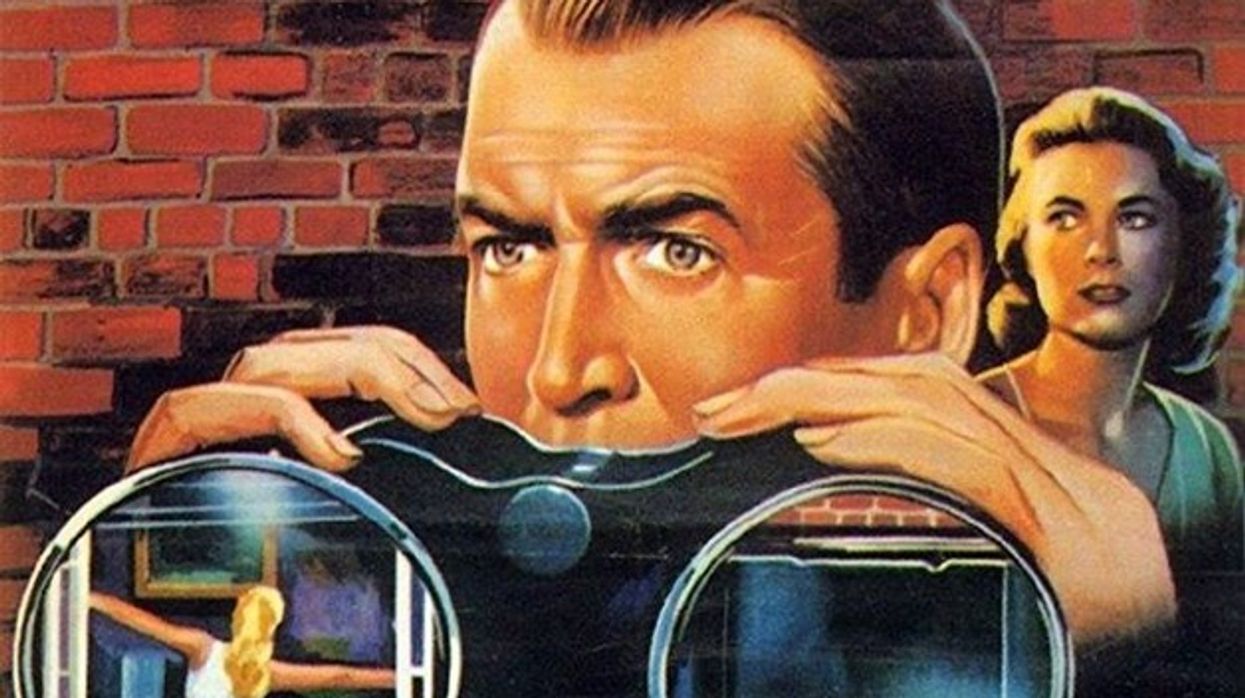You Need to Read the 'Rear Window' Script
The Rear Window screenplay is a masterclass in character and tension. Let's break down the ways it sets the story up for success.

Alfred Hitchcock is the master of suspense. He can give you thrills, chills, and often delivers a movie worthy of audience applause. His usual formula? taking his time. Modern movies aren't built that way much anymore. We often find ourselves barreling into exposition, character, in an effort to get to the plot.
But I think it's time we show some appreciation for a movie that takes its time steeping you into all of the above, without much dialogue at all.
I'm talking about Rear Window.
Let's look at how this classic script builds character, plot, tension and arcs everything while taking its time to deliver the best possible story.
Download the Rear Window Script PDF here!
Rear Window Script: Character Without Dialogue
The opening scene of Rear Window sets the stage for what the movie is all about; voyeurism. This slow crawl, which takes the first three pages, introduces us to everyone we're going to meet in the apartment complex. While the writing is not what modern scripts tend to look like, what I love about it is how poetic and detailed the first pages are. This writerly style continues throughout the story.
While this is adapted from a story by Cornell Woolrich, the writing here resembles a novel.
But it also builds the story and alludes to what each character will need when they arc.
We learn so much about Jeffries right away, all in visuals as we tour around his place. We see he's a photographer. He takes risks, and he's paid for those risks and wound up in a wheelchair. What's funny is that Jeffries' story is about inaction. He can watch what happens, he can theorize, but he can't make anything happen on his own.
Hitch balances his impatience with our impatience. While others act, we are stuck in our seats -- just like Jeffires.
But Lisa is not.
Lisa's Character Is So Well Done
Lisa's entrance to the story is one of the most memorable character intros in all of Hitchcock's work. The script and movie her up as a bombshell of high society. A woman concerned with statuses and appearances.
Then the rest of Rear Window is spent dispelling this notion. And it's awesome.
Lisa is in love with Jeffires. He's unsure she can hang. He's an idiot; she's brave and smart. And despite these differences, we want them to be together.
This is not a movie where Lisa arcs. This is a movie where we see Lisa be who she has always been. We see Jeffries arc, though. We see him understand that he may have painted her with the wrong brush.
It's kind of beautiful to see a guy like this come to terms with that realization.
And even more cunning to do it within a gripping set piece where he has no way to help her or tell her how wrong he's been.
These character moves, along with the genius storytelling, keep the narrative rolling at an engaging pace. Even at 160+ pages of the screenplay and two hours of movie, it feels like the run time flies by. One of the reasons is because we're so invested in the people we met in the opening and the completion of their journey.
Sure, the block returns to peace as people find love, their honey comes back from war, they want to live, and a murderer is apprehended. But the real story at the center is Lisa and Jeffries.
Do they, and their love, fit in this weird complex?
Sure.
But they also fit into one another's worlds. She can kick ass, he can wear a tie.
And now they both realize it.
What's next? Read Reservoir Dogs!
The Reservoir Dogs script is where it all began for Tarantino. Read the PDF and see what you can learn from the screenplay.
Click the link to learn more.



















